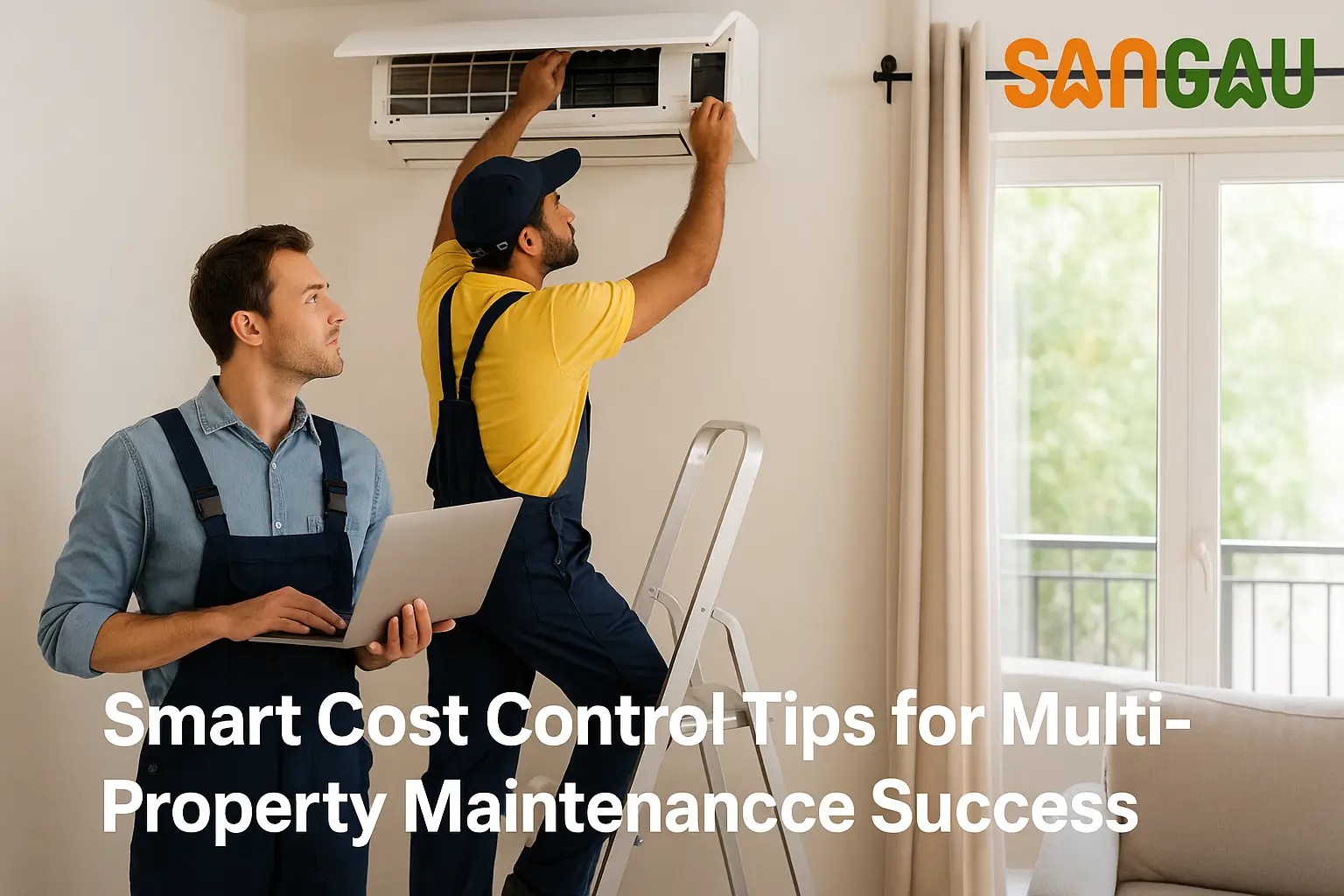Smart Cost Control Tips for Multi-Property Maintenance Success.
Published : 22 Sep 2025

Managing a single rental property can be relatively straightforward, but overseeing multiple properties—especially across different cities—adds layers of complexity. Landlords, NRIs, and property managers juggling several homes often face the challenge of controlling maintenance costs effectively. Whether it's fixing plumbing leaks in Bengaluru, pest control in Mumbai, or electrical issues in Hyderabad, unexpected maintenance expenses can quickly spiral out of control.
In this article, we explore smart, practical strategies designed to help you reduce and manage property maintenance costs without compromising quality. These tips are especially useful for those managing multiple properties, ensuring your rental assets remain in excellent condition while you keep your expenses in check.
1. Consolidate Maintenance Data for Full Visibility
The first step to effective cost control is centralising your maintenance records. Relying on memory or informal WhatsApp chats with service providers can lead to missed appointments, duplicated services, or lost warranty claims. Utilise a digital property management system—or even a shared Google Sheet—to log all maintenance requests, service dates, vendor contacts, costs, and results.
This central record allows you to analyse recurring issues, flag inefficiencies, and identify areas where expenses can be optimised across your portfolio.
2. Establish Preventive Maintenance Routines
Only reacting when something breaks often leads to higher expenses. Preventive maintenance such as bi-annual air conditioning servicing, plumbing inspections, and regular pest control can reduce emergency repairs.
Many Indian property owners overlook this, believing it saves money, but scheduled care prevents costly breakdowns. One emergency per year per property can quickly add up to significant costs, so a preventive maintenance plan isn’t just beneficial—it’s essential.
3. Leverage Bulk Service Contracts
Owning multiple properties gives you the advantage of negotiating bulk service contracts. Instead of hiring separate contractors for each location, arrange a deal with a single service provider covering all your properties.
Whether it’s pest control, electrical checks, painting, or plumbing, providers are often willing to offer discounted rates for guaranteed repeat business. NRIs should ensure their property managers negotiate long-term contracts with clear Service Level Agreements (SLAs) to guarantee consistent quality and fair pricing.
4. Prioritise Repairs Based on Urgency
Not all maintenance issues require immediate attention. Categorising tasks into critical, moderate, and non-urgent helps prevent unnecessary spending.
Urgent issues like water leaks or power failures need prompt action, while cosmetic cracks or minor loose fittings can wait or be handled together. This approach reduces costly emergency call-outs and ensures your budget is allocated more efficiently.
5. Standardise Fixtures to Cut Replacement Costs
Using standard models for fixtures and appliances such as geysers, taps, switches, and fans across all properties simplifies repairs and reduces costs. It enables you to buy spare parts in bulk and lowers the learning curve for technicians.
Standardisation saves time, reduces labour costs, and ensures your maintenance team can resolve issues faster, reducing repeat visits.
6. Build a Strong, Trusted Vendor Network
Calling a new technician every time something breaks is stressful and expensive. Develop a vetted list of reliable vendors segmented by service type and city.
Vendors familiar with your properties and expectations work more efficiently and often provide better pricing. NRIs should instruct property managers to avoid one-off hires from unknown marketplaces and focus instead on building long-term vendor relationships.
7. Allocate Budgets Per Property with Contingency Buffers
Rather than having one combined budget, assign separate maintenance allowances for each property, considering factors such as age, condition, and location.
For example, an older flat in Bengaluru might require more frequent electrical repairs than a newer unit in Pune. Include a contingency buffer for unexpected expenses. This approach allows better forecasting, tracks overruns, and facilitates fund reallocation, avoiding surprises.
8. Address Tenant Damages Systematically
Tenant wear and tear can quietly erode your profits. Beyond collecting a security deposit, document property conditions with photos during move-ins and move-outs, conduct walkthrough inspections, and maintain records.
This reduces disputes and helps recover repair costs fairly, saving significant sums over time from unnoticed damage across multiple properties.
9. Embrace Technology for Remote Oversight
Smart home technology isn’t just for luxury apartments; it’s a powerful tool for maintenance control.
Installing devices like water leak detectors, door sensors, or motion alarms can send instant alerts to your phone, enabling you to address issues before tenants notice. Remote cameras in common areas help spot problems like water seepage or security breaches early, reducing response times and preventing damage escalation.
10. Maximise Maintenance During Vacancies
Vacant periods are ideal for thorough maintenance. Use this time to check wiring, repaint walls, clean water tanks, and service appliances.
Without tenant disruption, vendors can work more efficiently, cutting labour hours and costs. Planned maintenance during turnovers prevents tenant dissatisfaction, reduces mid-lease issues, and preserves your rental assets’ value.
Bonus Tip: Focus on Value, Not Just Cost
Avoid always opting for the cheapest solution. Ask whether a low-cost part or service will last in the long term.
Sometimes investing in higher-quality, durable fittings or waterproofing pays off by reducing repetitive expenses and extending your property’s lifespan. The goal is to eliminate waste, not compromise value.
Conclusion and Call to Action
Effective maintenance cost control across multiple properties is achievable with smart planning, organisation, and relationship-building. Whether you're an NRI managing properties from abroad or a local landlord juggling several rentals, these strategies will help you save time, reduce expenses, and maintain your assets in prime condition.
If you found these tips useful, please share this article with fellow property owners and follow SANGAU for more expert insights into property management. Have questions or experiences to share? Leave a comment below — we’d love to hear from you!
Hashtags:
#PropertyMaintenance #LandlordTips #RealEstateManagement #CostControl #SANGAU


